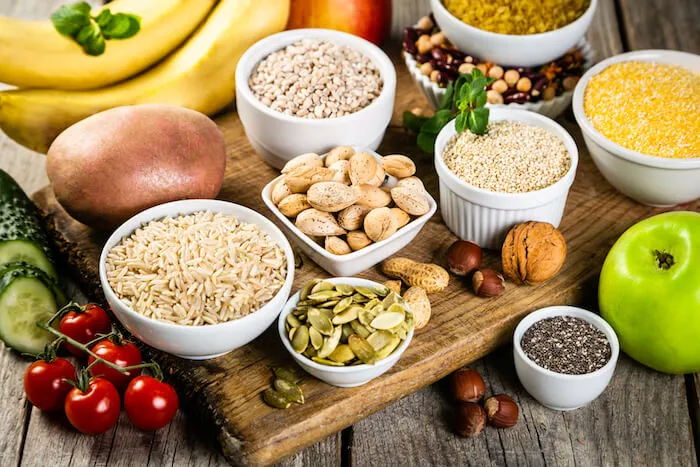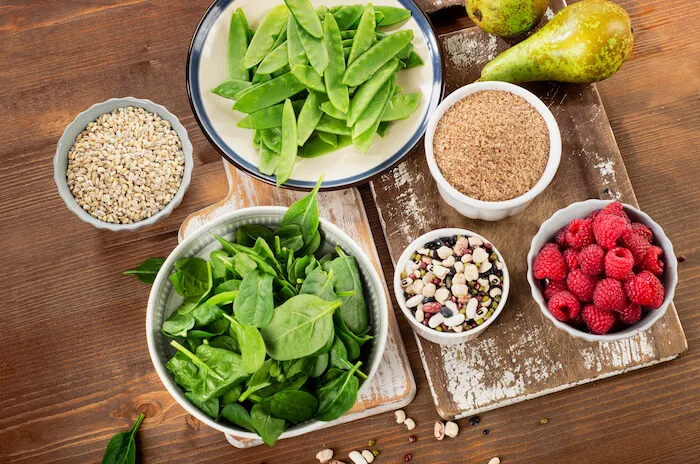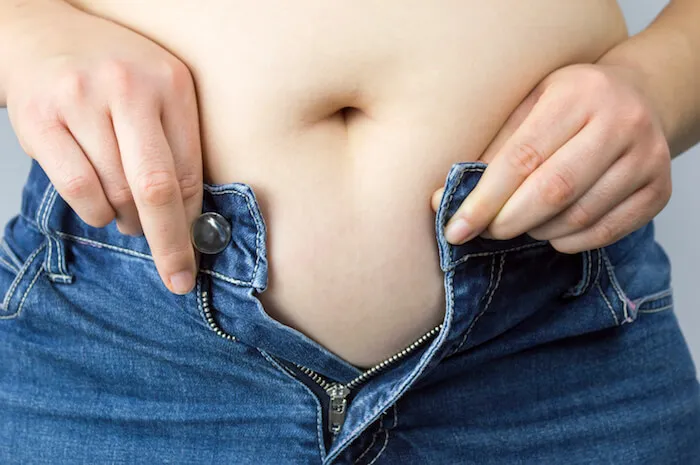Today, we’re going to talk about the type of carbs to avoid on a ketogenic diet. Whether you’re new to keto, or you’ve been doing the keto diet for a while now, you may have found it challenging to figure out which type of carbs are good, and which carbs are bad. Keep in mind that the keto diet is a low-carb diet, not a no-carb diet.
You do need some foods with carbs while on a keto diet; you just generally stay away from high-carb foods. For instance, even spinach and broccoli, which are fantastic sources of vitamins, have a small number of carbs.
We’re also going to talk about why some foods are keto-friendly, and some aren’t, even if they have the same total carbs. But before we jump in, let’s talk about the keto diet and why carbs are such a big deal in the first place.

In this article:
- What is Keto?
- Total Carbs Vs. Net Carbs
- High Vs. Low Glycemic Index Value
- The Goal When Choosing Carbs on a Keto Diet
- Carbs to Avoid and Low-Carb Alternatives
What is Keto?
Keto is a high-fat, low-carbohydrate diet. The goal is to put the body into a metabolic state called ketosis. The average American diet is full of carbs, which the body uses as its primary fuel source. However, when restricting your carbs on a low-carb ketogenic diet, your body then breaks down stored fats and turns them into ketones. Ketones are a molecule that your body can use for fuel, instead of carbs and sugar. The ketogenic diet challenges the assumption that a high-fat diet causes weight gain. Avoiding fat is not the way to weight loss! The number-one thing that helps with weight loss is avoiding foods with a high carb content. Low-fat diets with many carbs are what really cause health issues. This is because carbs turn into sugar. Not only does too much sugar trigger diabetes and weight gain, but it also feeds cancer cells. For a ketogenic diet to work, you have to keep your carbs low. But unfortunately, counting carbs is not quite that simple. Not all carbs are created equally. In fact, some carbs can be very good for you. To stay in ketosis, you should have between 20 and 50 net carbs each day. Keep in mind that net carbs are different than total carbs. Let me explain.
Total Carbs Vs. Net Carbs
When we talk about carbohydrates, we’re talking about net carbs, not total carbs. Most food products have a label, which shows a list of all of the macronutrients and micronutrients. In that list is a total carbohydrate count. You should not base your diet on this total carbohydrate count.
Not all carbs are equal. Some carbs are digested and used as fuel, and others are not digested and absorbed by the body. The difference is huge because indigestible carbs don’t count towards your daily keto diet allotment of 20-50 carbs.
Fiber is technically a carbohydrate. Fiber is split up into two groups: soluble fiber and insoluble fiber. Insoluble fiber is a type of fiber that is not able to be digested because it cannot be dissolved in or absorbed by water. Not only does insoluble fiber not raise your blood glucose, but it also has zero calories because it goes right through you.
However, soluble fiber does technically contribute calories to the body. This is because bacteria in the colon use soluble fiber to create short-chain fatty acids, which can be used by the body for energy. But here’s the thing: soluble fiber still has no effect on blood glucose levels.
All in all, we don’t treat fiber like we do other carbs because they don’t raise your blood glucose levels. Moreover, a large portion of the fiber is indigestible–meaning your body won’t use them for energy or store them as fat. In fact, unlike other carbs, fiber will help you stay full longer and contribute to weight loss.
What this call means is that we don’t count fiber as carbs when doing keto. Unfortunately, most food labels in the U.S. don’t have the net carbs listed; so let me give you a simple tip for calculating them yourself.
Here’s how it works. Take the total carbs content (which is usually written on the label) and subtract the fiber. So if a product has 23 grams of total carbs and 8 grams of fiber, you would subtract 8 from 23 and get 15. This will give you the net carbs. If you are looking at a high-fiber food, you may find that the majority of the carbs are fiber–which can still be compatible with the keto diet.
There is one other variable that the must look at when considering the types of carbs you should and shouldn’t have on a keto diet. It’s called the glycemic index. Let me explain.

High Vs. Low Glycemic Index Value
The glycemic index measures how fast a particular food raises your blood sugar. The lower a food’s glycemic index number, the less it affects your blood sugar and Fat Storing Hormone levels, and the higher a food’s glycemic index number, the more it affects your blood sugar and Fat Storing Hormone levels. Lettuce, for instance, has a glycemic index value of 15, while doughnuts have a glycemic index value of 76. Keep in mind that sugar content does not necessarily decide where a certain food sits on the glycemic index. Baked potatoes, which have less than 2 grams of sugar, have a glycemic index value of 111. If you’ve heard the terms “slow carbs” and “fast carbs” before, this is referring to where foods are on the glycemic index. Slow carbs, or carbs that affect your blood sugar slowly, are low on the index. Fast carbs, or carbs that rapidly affect your blood sugar, are high on the index. Here’s a list of some additives and foods and where they are on the glycemic index:
- Maltodextrin – 110
- Dextrose – 100
- Glucose – 100
- Bagel – 95
- Gatorade – 89
- Cornflakes – 81
- Puffed cereal – 80
- White bread – 72
- High-fructose corn syrup – 58
- Berries – 30
- Chickpeas – 10
You want to stay away from everything on this list with the exception of berries and chickpeas. Keep in mind that even though high-fructose corn syrup is relatively low compared to other sugars on the glycemic index, you want to avoid this stuff at all costs. The problem with fructose is that it goes after a different pathway into the liver, and it will create Fat Storing Hormone resistance and diabetes faster than many of the other sugars. You want to read food and drink labels and make sure they don’t have fructose or corn syrup before you buy them.
The Goal When Choosing Carbs on a Keto Diet
To summarize, here is what you should look out for to choose the right carbs on a keto diet:
- Pay attention to the net carbs, not the total carbs. Net carbs are what you get after subtracting the fiber (which doesn’t raise your blood sugar) from the total carbs. You want to keep your net carbs between 20 and 50 each day.
- Always choose foods that are low on the glycemic index. The glycemic index measures how quickly or slowly different foods affect your blood sugar levels. Slow carbs are always better than fast carbs.
- Keep your sugars as low to zero as possible, and always avoid artificial sweeteners like high-fructose corn syrup.
For your small number of daily carbs, you should be eating things like nuts, avocados, olives, and berries. When it comes to low-carb vegetables, you don’t even need to count the carbs in those. You should be getting plenty of low-carb vegetables in your diet like spinach, broccoli, celery, and cabbage.

Carbs to Avoid and Low-Carb Alternatives
Though there are many foods you have to avoid in order to stay in ketosis, there are also plenty of delicious low-carb foods on our keto food list you can have. It may be challenging at first to find the keto-friendly low-carb foods you like, but the health benefits will be well worth the trouble. Take a look at these foods with high net-carbs and the healthy low-carb food alternatives.
1. Bread and Grains
Bread and grain-based foods are a disaster for ketosis and weight loss. These extremely high on the glycemic index, they have no place in a low-carb diet. This includes things like bagels, rolls, wraps, flatbreads, pasta, cereal, and pizza crust. Avoid these at all costs. Low-carb alternatives: Try making a loaf of homemade keto-friendly bread. Take a look at my recipe for, what I like to call, “the healthiest bread in the world.” It contains zero wheat or grains. I also recommend using cauliflower instead of dough to make a healthy keto pizza. You can make low-carb pasta meals using things like zucchini noodles, spaghetti squash, shirataki noodles, cabbage noodles, or cauliflower pasta.
2. Starchy Vegetables
Potatoes, sweet potatoes, and corn are all examples of starchy vegetables. These vegetables contain a ton of carbs and are not compatible with a low-carb diet. One baked potato has a glycemic index score of 111. Not only will it throw off your blood sugar, but it will also wreak havoc on weight loss. Low-carb alternatives: There are many non-starchy vegetables that you can have. Leafy greens and cruciferous veggies should always be on your keto diet food list. They are packed full of vitamins and minerals. If you are craving some comfort food, try having mashed cauliflower with butter (or olive oil), full-fat cheese, and sour cream instead of potatoes. This will help you stay away from high carbs while also adding some more healthy saturated fat.
3. Some fruit
It’s no secret that you should avoid sugar-sweetened sodas, candy bars, cake, and fruit juices. These are all packed full of sugar, which will prevent ketosis. However, did you also know that many types of fruit are packed full of sugar and carbs? Bananas, apples, grapes, mangos, and pineapples are all high in carbs and sugar. Low-carb alternatives: Instead of the fruits that I mentioned above, have berries. Berries are relatively low in carbs and sugar. You can have blackberries, raspberries, and strawberries. Lemon and lemon juice are also great for adding flavor to your water and meals.
4. Fat-free or low-fat Salad Dressings
Not all salads are healthy–it largely depends on what you put on them. Always avoid fat-free or low-fat salad dressings. These kinds of dressings are often packed full of sugar and carbs. Even more, they take out all of the healthy keto fats. Low-carb alternatives: I recommend making your own dressing at home. Olive oil and vinegar are great to have on a salad. You can also try using coconut oil and avocado. If you do decide on store-bought dressings, stick to high-fat, low-carb, and low-sugar options. Always check the nutrition information on the label, and don’t buy anything with high-fructose corn syrup.
5. Crackers and Chips
Crackers and chips are packed full of carbs, and they add up very quickly. Just 10-15 chips can put you at your daily carb limit. Even more, snack crackers are often heavily processed and full of GMOs. It’s best to stay away from these altogether. Low-carb alternatives: If you’re looking for some crunch, have some snap peas or celery sticks. Dip them in hummus or healthy nut butter for extra flavor.
6. Milk
Not all dairy products are bad on a keto diet. However, milk is high in carbs and should be avoided whenever possible. This especially goes for lattes, flavored milk, and shakes because they are often packed with sugar. Low-carb alternatives: Instead of having a latte, have coffee with some heavy cream (grass-fed) or butter coffee. Cream and butter have far fewer carbs and sugars compared to milk. Always choose full-fat dairy products or have nut milk. Almond milk is a great alternative to milk for things like smoothies and protein shakes.
7. Sugar and Honey
Avoid anything with sugar and honey. Product labels may try to trick you into thinking sugary products are healthy with things like “made with 100% sugarcane” or “made with natural honey.” These are not healthy. Anything with sugar can throw your body out of ketosis. So avoid candy bars, sugary drinks, and other sweets. Low-carb and sugar-free alternatives: Many natural sweeteners are compatible with a low-carb diet. Stevia, monk fruit, erythritol, and xylitol are all zero on the glycemic index and great for keto. Just avoid artificial sweeteners like aspartame and high-fructose corn syrup. If you want a sweet treat, try having some dark chocolate (at least 70% cocoa). Dark chocolate isn’t sugar-free, but it does have far less sugar than a candy bar.
8. Beans and Legumes
Beans and legumes are high in fiber, vitamins, and minerals. However, on a low-carb diet, you should only have small amounts of beans and legumes. Having too much can easily put you over your daily limit. Low-carb alternatives: There aren’t many alternatives for beans and legumes. If you do have beans, it’s best to choose ones that are low on the glycemic index and have fewer net carbs. Have more leafy green vegetables instead of beans. You can also try making beanless refried beans, which calls for eggplant, bacon, and spices for flavor. If you find yourself struggling to cut out high-carb foods, up your fat intake with things like avocados, coconut oil, fatty wild-caught fish, cheese, and nuts. These foods will help you stay full and fight off carb cravings. Give these tips a try and see how they work for you. Up next:
Disclaimer: Our educational content is not meant or intended for medical advice or treatment.Editor’s Note: This post has been updated for quality and relevancy.






